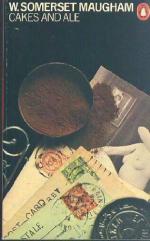|
This section contains 211 words (approx. 1 page at 400 words per page) |

|
Maugham never claimed to have a lively imagination, and he readily admitted that he took characters from people he knew or at least had observed. There is, however, a long tradition of such a practice. In the English novel, both Sterne and Smollett attacked enemies by unflattering fictional portrayals. So did Dickens and Disraeli. In later years, the same was done by H. G. Wells and Aldous Huxley.
In France, after the publication of Madame Bovary (1857), Flaubert was accused of painting a nasty picture of an acquaintance—he replied that Emma Bovary was actually himself. In America, Hemingway formed a character on Sherwood Anderson, and Thomas Wolfe created characters after Sinclair Lewis and a number of other contemporaries. Not all of the portraitures are negative; and the practice, while not invented by Maugham, was brought by him to a high level (many readers believe that...
|
This section contains 211 words (approx. 1 page at 400 words per page) |

|




